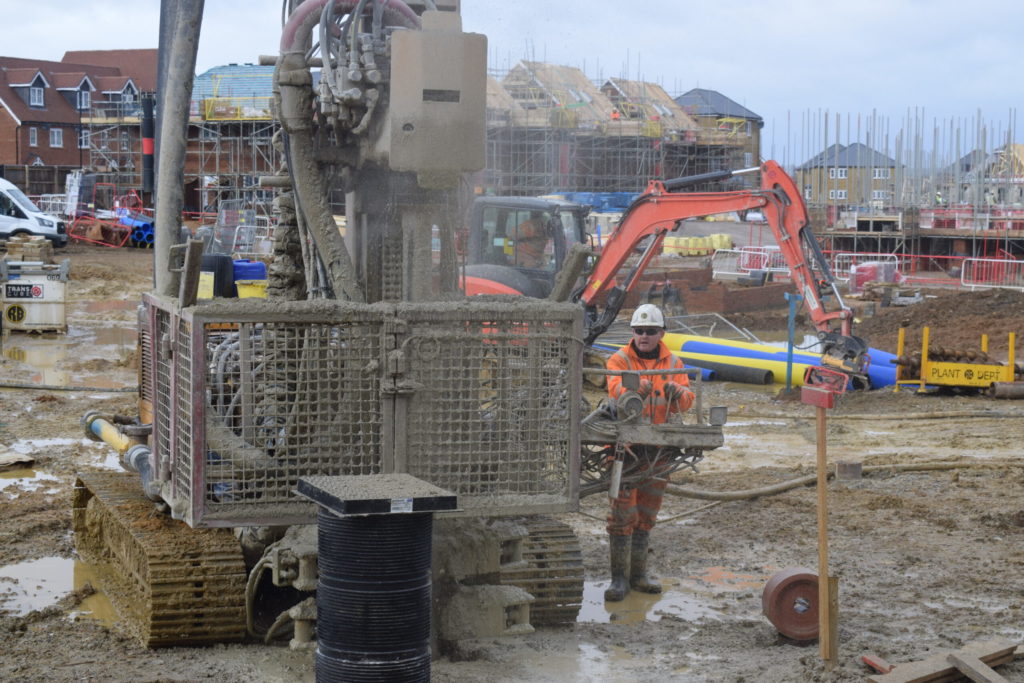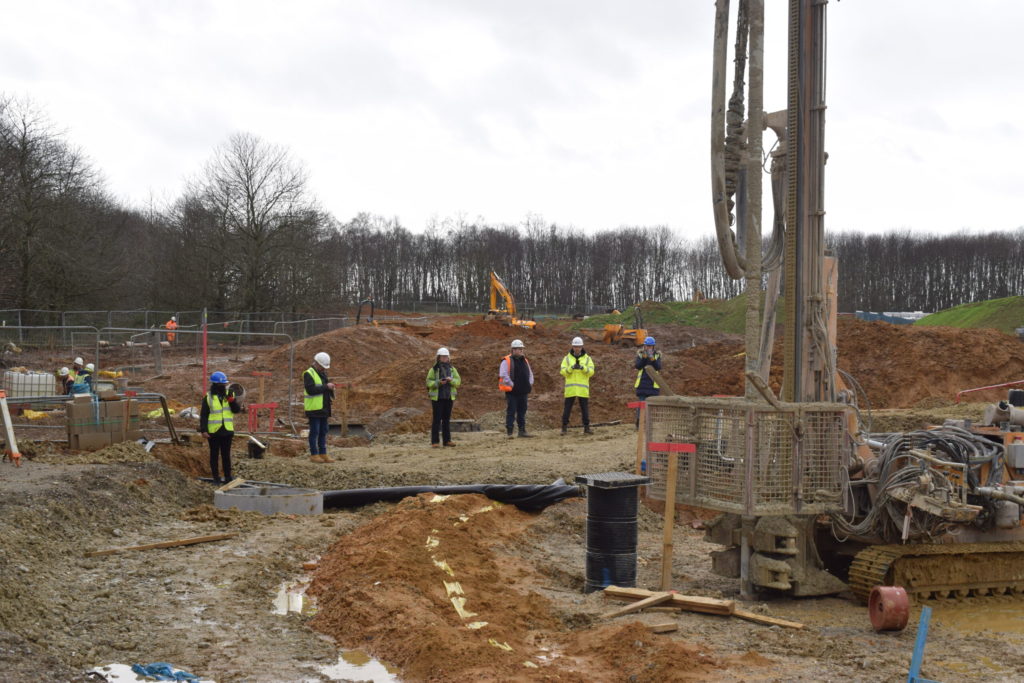CLIENT
Croudace Homes
SCOPE OF WORKS
ACHIEVEMENTS
NHBC Pride in the Job Award
Cost certainty to the client on an unquantifiable risk through value engineering
PROJECT BRIEF
RB was contacted by Croudace Homes to develop the foundation solution for a 500 unit development site in Maidstone, Kent.
The site investigation report revealed cambering of the Hythe beds. Gulls were present which were either filled with loose superficial deposits or unfilled, leaving voids within the rock. The intact Hythe formation was shown to consist of interbedded sandstone and limestone, with a broad strength range, the horizon of which followed no consistent level.
KEY ISSUES
Due to the varying rock levels, RB advised that probing should be undertaken in order to identify areas of concern and provide information to allow the intact rock level to be plotted. 800 no. positions were undertaken and revealed the presence of loose zones of ground between depths of 2.50m and 4.0m, with some probes continuing to depths of 10.00m before reaching competent rock.
After undertaking an in-depth review of the site investigation, RB proposed the use of ODEX (Overburden Drilling EXcentric) piling as the most suitable piling technique. This would allow a thin wall casing to be advanced through the overburden, large rock fragments, voids, and weathered rock head.
Once the intact rock head is reached a rock socket is formed using a smaller diameter DTH hammer. The permanent thin wall casing allows the rock socket to be formed by preventing collapse of the superficial deposits above. The casing also prevents the loss of grout into the surrounding voids when the pile is filled.
RB proposed 220mm diameter ODEX casing piles with a 190mm rock socket, achieving compressive loads between 100kN – 450kN. All piles would contain full-length compression reinforcement along with a reinforcement cage and would be filled with high-strength ready mixed grout.
SOLUTION
The numerous dynamic probe results were plotted by RB to map the expected rock head level across the site prior to installation. It was clear that the intact rock would be encountered at varying depths, with adjacent piles often having a considerable difference in length.
Due to this variability, it was not possible to have a predetermined pile length and each pile was considered individually based upon the ground conditions encountered at each respective position.
Our experienced team carried out a careful examination of the flushed material to confirm the ground conditions at each location. Parameters such as the size and color of the flushed material were monitored along with the drilling rate of each rock layer. Frequent rock fragments were encountered suspended within loose deposits above the rock head. These fragments would have obstructed the progress of a conventional driven or bored pile however the ODEX technique, selected by our experienced engineers, was able to advance efficiently through these and onwards to the main rockhead.
Once the intact rock was reached, a 190mm diameter socket was drilled to a depth of 4.0m. This socket length was determined through static design calculations based upon the results of numerous uniaxial compression tests undertaken on core samples of the various rock types present beneath the site. The static design calculations incorporated the lower bound rock strength values associated with the Sandstone layers found within the limestone bedrock. The rock socket was designed on shaft resistance alone with no capacity taken from either the base of the socket or the superficial deposits above the rock head. This mitigated the risk associated with voids being present beneath the base of the pile along with preventing differential settlement issues. This comprehensive design approach, along with a methodical pile testing regime, was reassuring for our client and satisfied all of the third-party warranty providers’ requirements.
RB successfully completed 4 phases at the site, installing over 850 piles with casing depths of between 2.0m and 12.0m. Pile testing results have been reviewed after each phase and used to confirm and refine the design parameters used to calculate the socket length.
On a site where the sub-surface conditions were extremely variable, RB was able to use their expertise to develop a foundation scheme that mitigated both cost and programme risk for our client.




